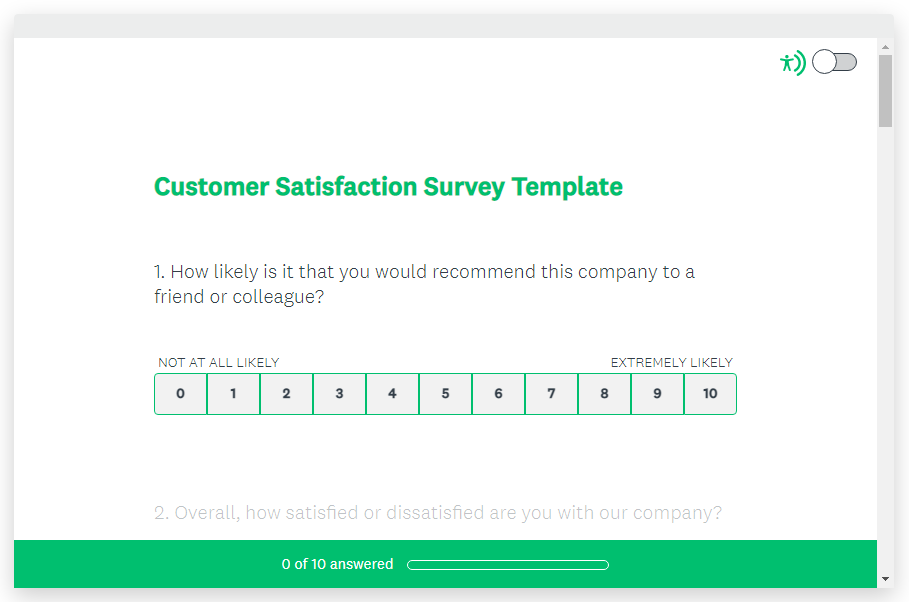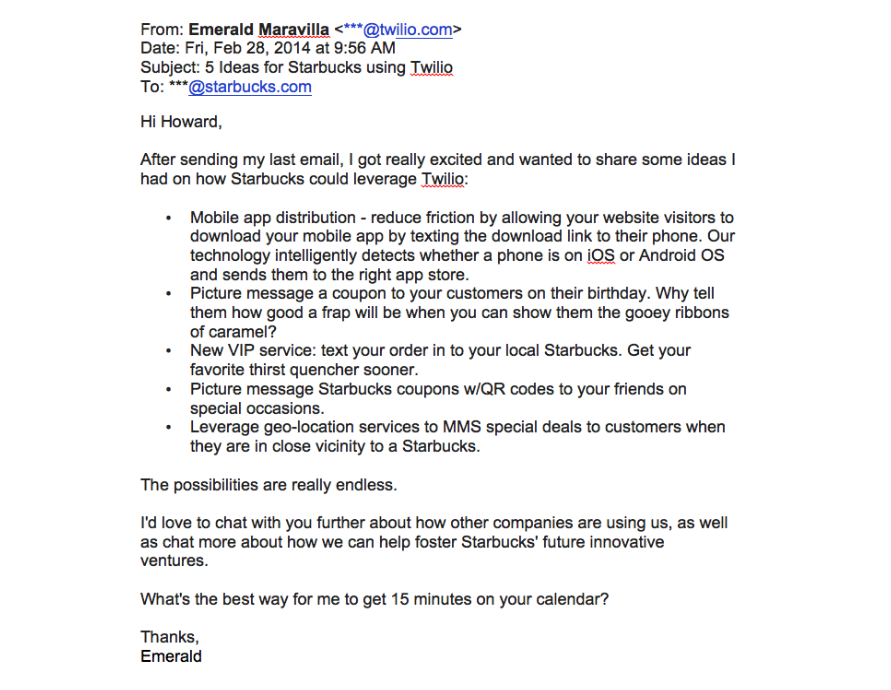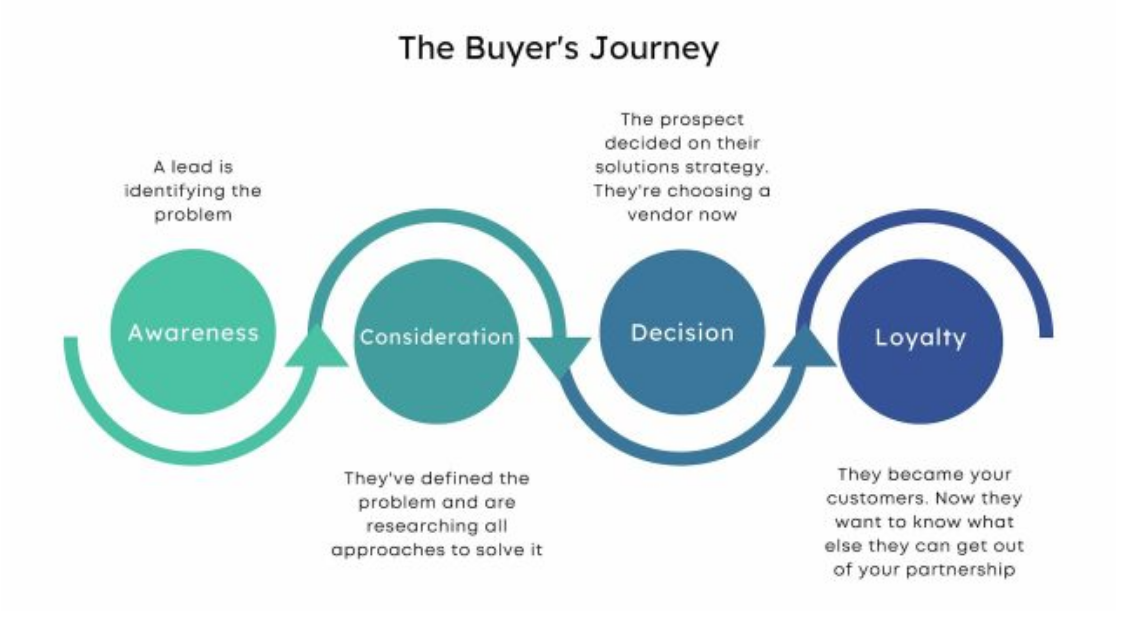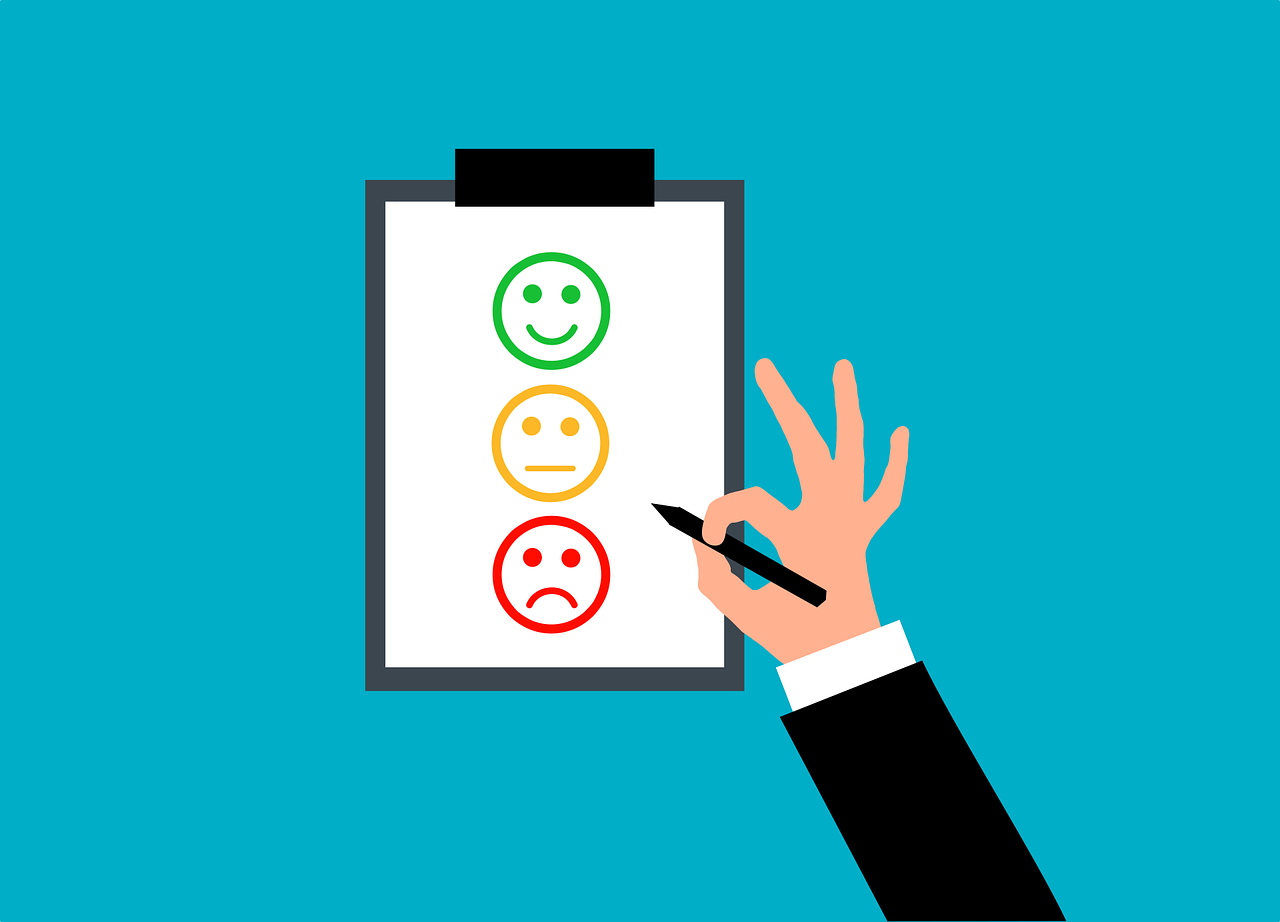Voice of the Customer (VoC) and market research are often discussed as separate disciplines but in reality, they are two sides of the same coin. Both create a holistic view of how people see your brand from the inside out.
How do you know if your brand is really being heard? What does this mean for improving customer experience? Do you have an idea of what’s driving your business forward?
You can answer these questions by communicating how customers interact with your brand in real-time and observing from the outside looking in. Let’s learn why leveraging VoC and market research is key to surviving in today’s highly competitive marketplace.
What is the Voice of the Customer?
Voice of the Customer is a way to collect and analyze data from customers about their needs, expectations, and experiences with your organization or product. It helps you identify what customers want, how they feel about your products or services, how well your company is meeting those needs, and gaps in the overall experience.
VoC allows businesses to develop a data-driven customer experience that is measurable and adjustable to reach targets and schedules. Voice of the customer involves collecting feedback from customers to understand their needs, expectations, preferences, and experiences with your organization or product. According to a consumer study, 89% of customers say a good customer experience increases the likelihood that they’ll make a repeat purchase with a brand.
What are the types of VoC?
There are various types of VoCs and each one has a different use case. Some of them are general and can be used by almost any business in your industry and others are specific to your business and, unless you make it public, no one else can see or access it. Below is a list of the most common types of VoC.
Customer surveys
Source: SurveyMonkey.
A customer survey is a type of VoC that asks customers to answer questions in order to understand their experience with your company or product. It’s a great way to get feedback on specific topics, such as the quality of your products, customer service levels, and overall satisfaction. Surveys are often conducted online using platforms like SurveyMonkey, or Google Forms.
As businesses search for strong Google Forms alternatives, they’re discovering a new generation of survey tools that are as innovative as they are effective. These platforms go beyond the basics, offering everything from intricate logic branching to instant analytics, transforming how companies gather customer feedback.
While Google Forms remains a popular choice, the dynamic world of digital surveys calls for tools that are not only easy to use but also highly customizable, meeting the sophisticated needs of today’s users.
Social media and online reviews
Social media and online reviews are a type of VoC that allows customers to give feedback about your company or product through public forums like Facebook, Twitter, Yelp, and Amazon. They’re great for getting real-time feedback on specific issues, such as if an online order went wrong or if a product was delivered late.
This allows you to stay informed about what customers are saying about your brand, identify potential issues or complaints, and address them promptly. Social media monitoring tools also provide valuable analytics and insights, helping you understand customer sentiment and trends, and enabling you to make informed decisions to enhance your products and services based on real-time feedback.
Online reviews have become the digital pulse of consumer sentiment, wielding unprecedented power in shaping brand perceptions and purchase decisions. In this era of hyper-connectivity, these virtual testimonials serve as both judge and jury, capable of catapulting a business to stardom or relegating it to obscurity with alarming speed.
Savvy companies recognize that these reviews aren’t just idle chatter; they’re a goldmine of raw, unfiltered feedback that, when properly harnessed, can drive innovation and foster customer loyalty.
Interviews and focus groups
This is another popular form of VoC that allows you to speak directly with customers about their experiences. Focus groups are a great way to get customer feedback on specific products or services, while interviews allow you to explore customer needs and gauge the market’s reaction to specific ideas or projects.
Keep in mind that with focus groups, there’s a real risk of groupthink. If you go this route, bring an experienced interlocutor on board to keep the conversation on track and prevent one or two people from leading the rest of the participants.
Email, live chat, and customer support
Source: HubSpot
Email and live chat are two of the most popular methods of collecting VoC. Email is a great way to ask for feedback from customers who have already purchased or used your product or service. Live chat is an excellent way to engage with potential customers before they become actual customers.
These types of VoC can be used in conjunction with each other. You could first run an email campaign asking for feedback on a problem people are experiencing. Then, you can use that data to come up with the next step in your marketing strategy, such as email personalization or content marketing.
Website behavior
Website behavior refers to the actions and interactions of visitors on a website. It includes various metrics such as the time spent on the website, pages visited, clicks, and other user behaviors. Analyzing website behavior is essential in understanding the needs and preferences of visitors, identifying areas for improvement, and optimizing the user experience.
Customer success team
Your customer success team is an excellent resource for collecting VoC. They can tell you what kinds of questions customers are asking, which ones are common, and which are unique to a specific industry or type of business.
The more you know about your target audience’s needs, wants, and desires, the better equipped you will be at creating marketing campaigns that resonate with them.
How does the VoC process work?
For all VoC types, you can design a standard process since all approaches have the same objective. That is to collect and analyze customer feedback so you can improve your products and services. The following steps are a general outline of what the process looks like:
- Identify the problem or opportunity in which you want to use VoC.
- Get buy-in from organizational leaders on the importance of VoC to gain substantial support.
- Choose a type of VoC to employ (e.g., customer journey mapping, customer survey).
- Create an interview guide, if needed, and distribute it to interviewers or work with them one-on-one over the phone or in person.
- Collect data via interviews or surveys (depending on what method you choose).
For example, a retail company noticed customers were abandoning their shopping carts before completing purchases. They conducted a buyer’s journey mapping exercise, surveying customers and discovering the checkout process was too complex. They redesigned the process to be more intuitive, created a new page with shipping and return information, and offered more payment options.
The changes led to a significant improvement in the website’s conversion rate, with more customers completing purchases. Customers appreciated the improved user experience and ease of ordering, leading to positive feedback and business growth.
Source: KyLeads.
By using the VoC process and customer journey mapping, the company was able to identify and address the root cause of the problem, resulting in increased customer satisfaction and business success..
What are the VoC benefits to customer experience?
VoC offers businesses numerous benefits that primarily help improve customer experience. Among these are:
Increased sales and revenue: VoC solutions help businesses get more leads, convert them into customers and improve the lifetime value of each customer. A recent MicroStrategy report says companies that have adopted data and analytics have reported several benefits that continue to drive their investments. These include increased efficiency and productivity (64%), quicker and more effective decision-making (56%), and improved financial performance (51%).
Improved customer service: Companies can use VoC solutions to identify their most loyal customers as well as those who are least satisfied with their products or services. With this info, they can focus on improving customer satisfaction levels across all demographics.
Increased loyalty and retention rates: Companies can use voice of the customer solutions to identify their most loyal customers as well as those who are least satisfied with their products or services so that they can focus on improving customer satisfaction levels across all demographics.
Improved product development: Companies can use VoC solutions and other new marketing tools to better understand how customers use their products, which helps them design new features and improve existing ones.
What is Market Research?
Market research is the process of collecting, analyzing, and interpreting data about consumers to inform business decisions. It’s a way to gain insights into consumer behaviors and opinions, as well as understand how people think about your brand or product.
It’s important for companies to understand their target audience so they can create products or services that meet their needs. Market research can be used to measure the effectiveness of new products, identify areas for improvement and innovation, and inform business decisions.
Effective market research helps businesses determine what customers want and need, identify trends within a specific industry, evaluate competitors’ strategies, predict future consumer behavior and preferences
Different Types of Market Research
There are various types of Market Research. The following types, which focus on customer experience, are the most common:
Consumer research: This type of research focuses on understanding the needs, wants, and preferences of consumers. It can be used to identify new product ideas and develop strategies for marketing a product or service.
Customer segmentation research: This type of research identifies the various segments of customers within a market, and analyzes factors such as age, income, lifestyle, or other characteristics. In addition to identifying individual customers by their demographics and psychographics, it can also be used to identify specific customer types: for example, senior citizens versus younger adults.
Competitor research: This type of research looks at the competitive landscape and identifies competitors’ strengths, weaknesses, strategies, and tactics. It can also be used to identify new market opportunities that are currently being overlooked by existing players.
Brand research: This type of research looks at a brand’s strengths and weaknesses, as well as the target audience’s perception of it. It can also be used to identify competitors’ branding strategies, including those that are likely to go unnoticed by customers.
Product development: This type of research identifies new product ideas or improves existing ones based on customer feedback. It can also be used to determine which features are most important to your target customers.
For electronics, processes like Eagle PCB design ensure that product concepts align with functional and technical requirements. This approach not only enhances product usability but also ensures that development efforts focus on delivering value to end-users.
Market research has evolved far beyond simple data collection, transforming into a sophisticated strategic tool that drives intelligent business decisions. By leveraging cutting-edge analytical techniques and deep consumer psychology, organizations can now unlock insights that were previously invisible, creating a powerful lens through which to view competitive landscapes and emerging opportunities.
For instance, in the cheese market, this could guide producers on whether to focus on organic ingredients, unique flavors, or packaging innovations.
When businesses weave together these different strategies, they’re crafting a well-rounded game plan that makes the most of what they learn about their competitors.
It’s like piecing together a puzzle – looking at what others are doing, understanding how the public sees your brand, and figuring out what people really want from your products.
This doesn’t just put you a step ahead in the game; it also makes sure your products and the way you talk about them really hit home with the folks you’re trying to reach.
In the end, it’s all about growing in a way that lasts, making sure you’re not just keeping up but really connecting with people.
Usability testing: Market research can also be used to test product or service usability. Usability testing is a form of market research that helps you determine whether your product or service is easy to use. It can be conducted in-person or remotely, and it often involves showing users prototypes of your product and asking them questions about how they feel about using it.
Marketing campaign evaluation: This type of market research focuses on measuring the success of your marketing campaigns and determining whether or not they are achieving their goals. For instance, if you have an advertisement that’s supposed to increase sales by 10%, this type of research will let you know if it worked.
Benefits of market research to customer experience
Like the Voice of the Consumer and other marketing methods, market research offers many benefits. These include the following:
- It’s a cost-effective way to determine your customers’ needs and desires.
- It helps you better understand the competition and how to compete with them more effectively.
- Market research can help you create products that appeal to your target market, resulting in higher sales.
- It helps you gain insights into the factors that influence your customers’ purchase decisions, which can help you develop marketing strategies and tactics that are more effective.
- Market research can help you determine the price points that are most likely to appeal to your target market.
- It helps you identify gaps in your product line or service offerings, which can lead to new products and services that meet an unmet need.
- Live chat is an incredibly effective and forward-thinking solution. Clients have expressed that this method significantly simplifies the resolution of technical problems and streamlines the process of providing feedback. Therefore, it is advisable to consider the development and deployment of such a system.
What are the Benefits of Adopting Both VoC and Market Research
Image from Pixabay.com
Separately, VoC and market research offer many benefits. But when deployed together, VoC and market research can lead to even more benefits. Here are some examples:
You can use the insights from your VoC program to determine how much weight to give each factor in your market research analysis. For instance, if customers say that price is the most important factor for them, you can give that factor more weight in your market research analysis.
Or if customers say that ease of use is very important, but they also mention that they would be willing to pay extra for a feature like remote access capability—an example of how VoC and market research can work together
You may uncover new opportunities that can help you develop better-targeted products and services. For example, if you discover that customers don’t want to pay extra for a feature like remote access capability, then you can focus on developing a product that doesn’t include it.
Or you may learn that customers want a lower-priced model but are willing to pay extra for remote access capability. This insight can help you develop a product that meets both needs.
You can use your market research to confirm the findings of your VoC program. This approach is a powerful way to validate whether your VoC program works or not. Suppose you do some VoC research and find that customers generally want a more affordable price range for your products. You then run a market survey to confirm this finding. If the results match, you can be confident that your VoC program isn’t giving you false positives (i.e., what customers say they want isn’t actually what they want).
You can use market research to identify potential customers and their needs, which in turn helps you improve the way you collect feedback using VoC tools.
You can use VoC insights to make informed decisions about product development, marketing strategies, and customer service improvements. For example, a consumer electronics company could use VoC to understand what customers want in their next smartphone. It can then use market research to analyze the latest technology trends and competitor offerings to develop a product that meets customer needs and stands out from the competition.
Finally, you can find out what customers think about new product ideas using VoC, which can help you determine if the concept is viable before investing in it based on market research.
Takeaway: Two Marketing Methods are Better than One
Leveraging both VoC and market research is essential to understand how customers perceive your brand and what they expect from your products or services. VoC allows businesses to collect and analyze customer feedback, which provides insights into their needs, expectations, and preferences. Market research, on the other hand, provides a broader view of the industry and helps businesses identify market trends, competitors, and potential opportunities.
By combining the insights gained from both VoC and market research, businesses can develop a comprehensive understanding of their customers and the market, which is crucial for survival in today’s highly competitive marketplace. Therefore, it’s important to incorporate both VoC and market research in your business strategy to deliver an exceptional customer experience and stay ahead of the competition.



